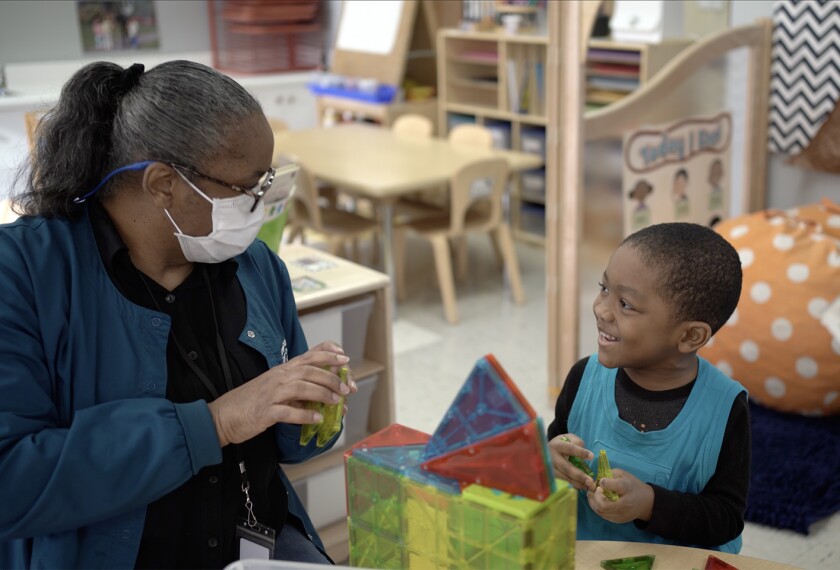To avoid widespread school readiness gaps, experts say teachers and parents need to give children born since the pandemic an immediate language infusion.
Already, studies find a third of children who started school during the pandemic need “intensive” reading help, and the need may become even more widespread for children born in the last few years. Researchers find many of these infants and toddlers have had less exposure to rich language environments and show slower language development.
“It seems like a lot of our kids now are not where other kids have been. They’re not cooing and they’re not doing the things that I have witnessed in the past,” said Brittany Ferguson, an Early Head Start teacher in Longmont, Colo.
“I feel like patience is going to need to be a big thing,” she added. “In the next years, as these kids are coming into school, it is going to be challenging because of just how different things have been.”
Education Week spoke to preschool teachers about the new research findings and practical solutions for building young students’ language skills. One was Ferguson and the other was Brigitte Willis, owner and teacher of A Better Day childcare in Grovetown, Ga. Willis worked with a coach from the LENA Grow program, which provides professional development around child language development, for eight weeks in 2020 to measure and increase how often she spoke with and encouraged vocal responses from her five students ages 7 months to nearly 3 years.
Working around health and safety measures
Children under 5 remain the only age group unable to be vaccinated against the coronavirus that causes COVID-19. Both Ferguson and Willis said they were able to continue to teach in-person throughout the pandemic because of mitigation strategies like hygiene, using facial masks, and social distancing, but they said educators have to “do extra” to ensure infants and toddlers still can engage linguistically.
“We’re missing the facial expressions, wearing masks,” Ferguson said. “If you’re feeding a baby a bottle or changing a diaper, or if someone’s crying, they don’t necessarily get to see you smile and talk. And if they are young enough, they might hear you talk across the room [while physically distanced], but they don’t necessarily know it’s directed toward them.”
Ferguson said she has increased the overall amount of reading and singing she does with her infants and toddlers, and has started touching a child whenever she speaks to draw their attention.
“Even though they can’t necessarily see me smile at them, I’m just trying to pull them in as much as I can,” Ferguson said.
Willis agreed, noting that she has tested many kinds of face masks to find ones that muffle her voice as little as possible and “I’m slowing down, trying to enunciate clearly and be as intentional as possible when I speak” to the children.
Parent engagement can be critical tool
One recent study found that while parents reported reading with their young children as often during the pandemic as before,they were more distracted, and less likely to read complex books or to have conversations while reading.
But Willis said it’s important for educators not to blame or lecture parents who have had less time to engage their young children verbally.
“Parents are trying to deal with so much, you know, and juggle so many different things,” Willis said. “I try to come from a strength-based approach for parents ... to make sure they have a ton of information and resources [on engagement] ready at their touch.”
Willis also makes parents aware of ways that improving verbal skills can also help toddlers’ behavior. “I won’t say [behavior] isn’t a challenge, but it’s what kids do at this age. They’re trying to figure out the boundaries, their feelings, their emotions in being able to say their words.”
Teachers may also encourage parents who have used more digital books and apps for their toddlers and young children during the pandemic to dedicate more time to reading print books with their children instead. One recent meta-analysis found most commercially available e-books don’t focus a child’s attention as well as adults do when reading a story with a child, such as by asking questions, pointing out story elements, or highlighting chains of events.







